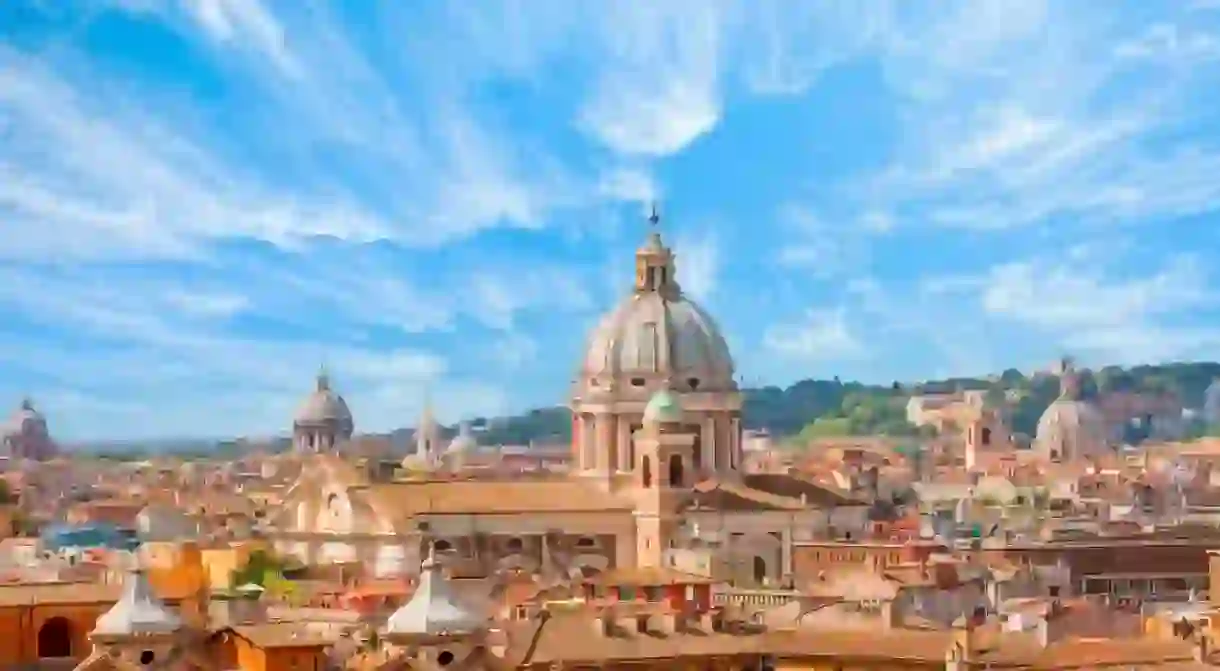The Most Impressive Buildings in Rome

Roman architecture and engineering are among the most lauded in the world and have had a major impact on art, building practices and urban planning across the centuries. From the Colosseum to the MAXXI, we’ve compiled a list of some of the architectural wonders in Rome – both ancient and modern – to guide you.
The Colosseum
Historical Landmark, Architectural Landmark

The Colosseum is one of the most recognisable structures in the world. Built during the Flavian dynasty, between 70CE and 80CE – then known as the Flavian amphitheatre – it is the largest amphitheatre ever built and was modelled after the ancient Teatro Marcello. The Colosseum held around 65,000 spectators and was used for gladiator contests, public spectacles such as re-enactments of famous battles, theatrical productions, animal hunts and executions.
Teatro di Marcello
Historical Landmark, Architectural Landmark

The Teatro Marcello (Theatre of Marcellus) was an ancient open-air theatre that served as inspiration for the Colosseum, although it is semicircular, whereas the Colosseum is circular. Commissioned by Julius Caesar, who was murdered before construction began, it was completed by Emperor Augustus in 11BCE and named after his nephew, Marcus Claudius Marcellus, who died, aged 19, five years before it was finished. Situated near the River Tiber, it could hold up to 20,000 spectators and was a revolutionary structure at the time. With arches, tunnels, columns and ramps, it showcased the finest ancient Roman skill and artistry.
Altar of Peace Museum
Museum
The contemporary Ara Pacis Museum is a fascinating sight because it fuses old and new in an innovative way. The museum was designed by American architect Richard Meier in 2006 to contain the ancient Ara Pacis, or altar of peace, which dates back to 13BCE. The intricately decorated altar, covered in friezes depicting figures, battles and processions, is enclosed in a cleverly contrasting contemporary steel and glass structure.
Corte Supreme di Cassazione
Historical Landmark
Rome’s Palace of Justice, the seat of the Supreme Court of Cassation – the highest court of appeal in Italy – is an enormous building in the Prati district that dominates the banks of the Tiber River. It is often referred to as Il Palazzaccio, a pejorative name that roughly translates as “bad palace”. Its large size, ostentatious decorations and lengthy construction period seemed to suggest corruption when it was opened in 1911. Inspired by Renaissance and baroque architecture, it remains one of the most impressive buildings in the city.
Il Vittoriano
Building

Another building that Romans love to hate is Il Vittoriano, in Piazza Venezia. Dubbed the Wedding Cake for its gleaning white marble and tiered levels, this large altar was built between 1885 and 1925 to honour Victor Emmanuel II, the first king of unified Italy. Replete with stairs, columns, fountains and sculptures, it was controversial because it destroyed the area of the Capitoline Hill and dominates the skyline. Nevertheless, it lies at the heart of Rome and is a focal point of the city.
St. Peter's Basilica
Architectural Landmark, Historical Landmark
Travellers come from near and far to visit St Peter’s Basilica, in the Vatican City, one of the holiest Catholic shrines in the world. Built above the burial site of Peter the Apostle, it is an important pilgrimage site and a wonder to behold in person. The basilica, completed in 1626, was designed by numerous artists, including Donato Bramante, Michelangelo, Carlo Maderno and Gian Lorenzo Bernini. Michelangelo’s famous dome was inspired by the Pantheon and the Duomo of Florence.
Pantheon
Building, Church

Castel Sant'Angelo
Historical Landmark, Architectural Landmark
Castel Sant’Angelo, also known as Hadrian’s mausoleum, is a cylindrical fortress that lies on the banks of the Tiber River near Vatican City. Emperor Hadrian commissioned the mausoleum as a resting place for himself and his family, and the structure was later used as a fortress and castle by the popes, due to its proximity to Vatican City. At the time of its construction, between 123CE and 139CE, it was the tallest building in Rome.
MAXXI
Building, Museum
Palazzo della Civiltà Italiana
Historical Landmark

Often referred to as the Square Colosseum, Rome’s Palazzo della Civiltà Italiana is an excellent example of the Rationalist architecture that dominated the city during Fascism in the early 20th century. Built in the neoclassical style, it is located in the city’s southern EUR neighbourhood, which was designed to host the 1942 World’s Fair. The event never took place because of the Second World War, but the buildings pay tribute to this period in the city’s history. Today the building is leased by the Fendi fashion house.
Pyramid of Cestius
Historical Landmark, Architectural Landmark

Few people realise that in addition to Roman antiquities, Rome also has its own ancient pyramid. Located between the Testaccio and Ostiense neighbourhoods, the Pyramid was built between 18BCE and 12BCE as a tomb for Gaius Cestius, a magistrate in ancient Rome. With its sharp point, it closely resembles the Nubian pyramids along the Nile Delta in Egypt and includes an interior burial chamber that originally featured frescoes. The pyramid was incorporated in the Aurelian walls, which has helped preserve the structure to the present day.
Trips and Tours in Italy
Architectural Landmark

Planning to take your holidays in Italy? Take a look at our incredible collection of multi-day tour packages all over the country, including a number of Roman itineraries. Check those out, as well as trips to Tuscany, the Dolomites and so much more, by clicking the button below.













